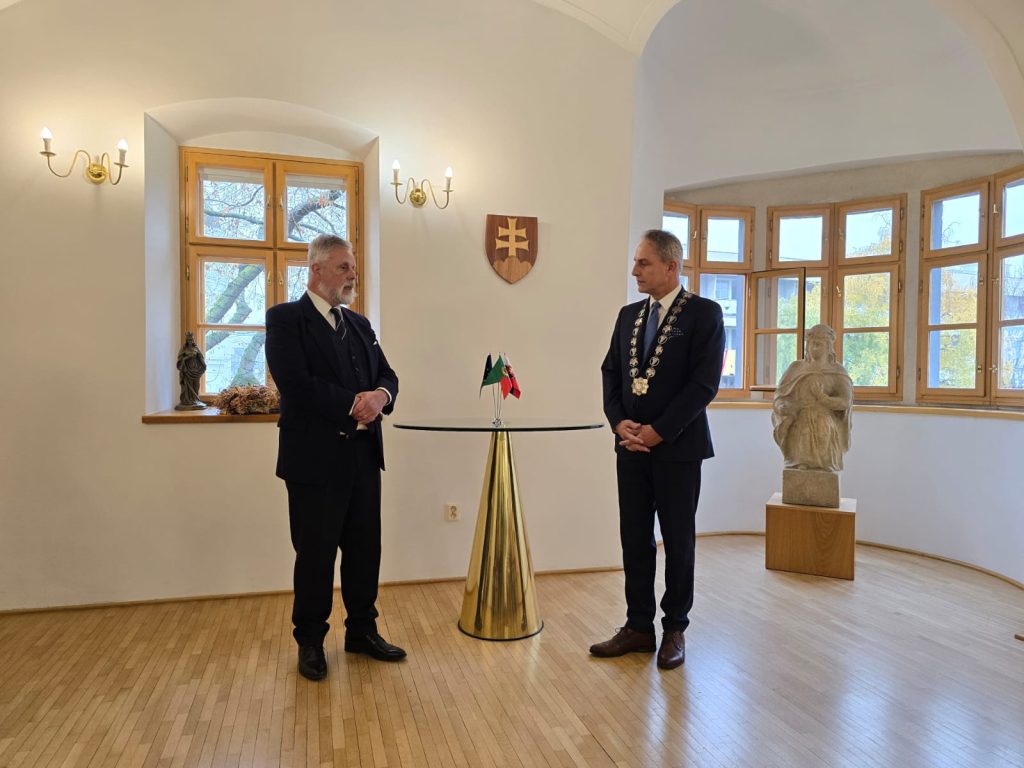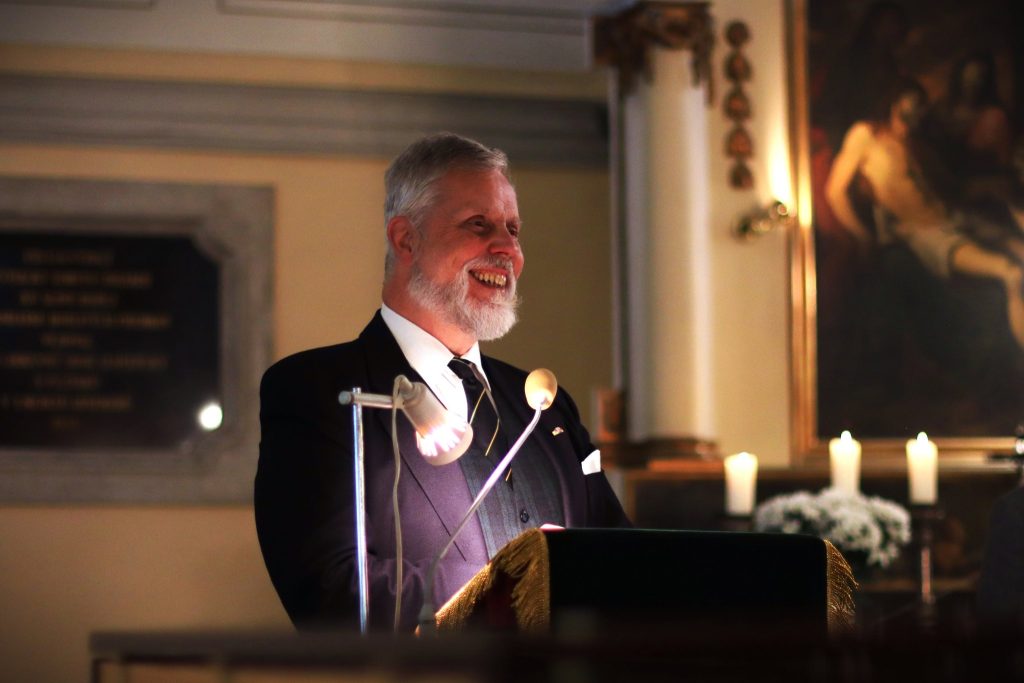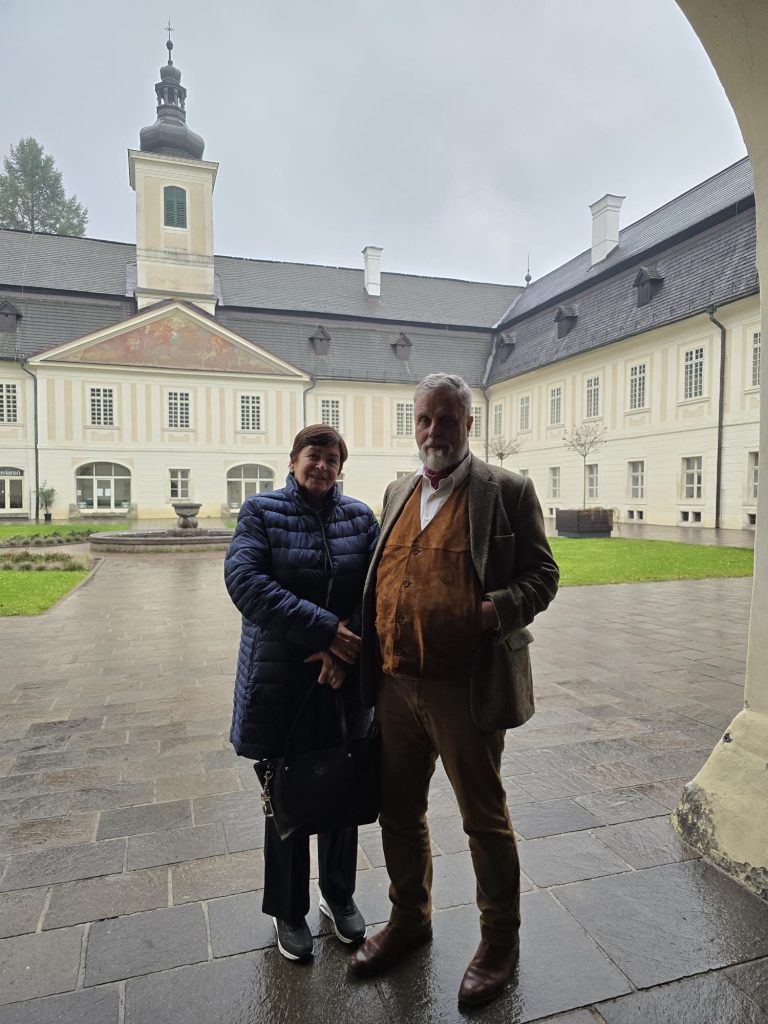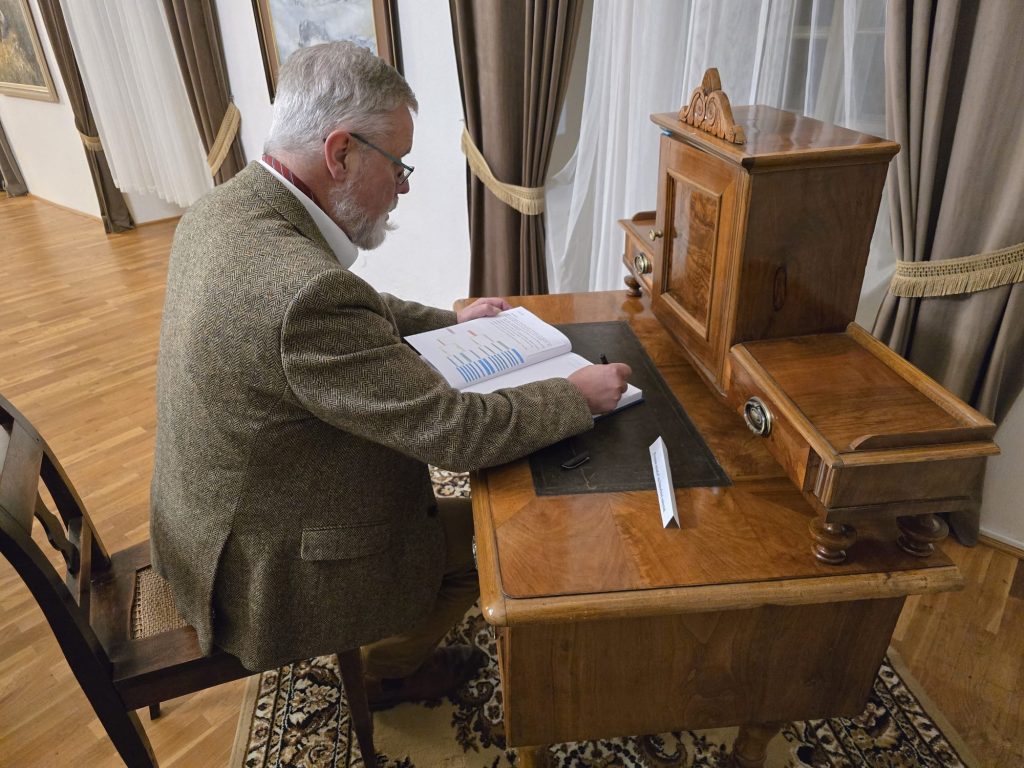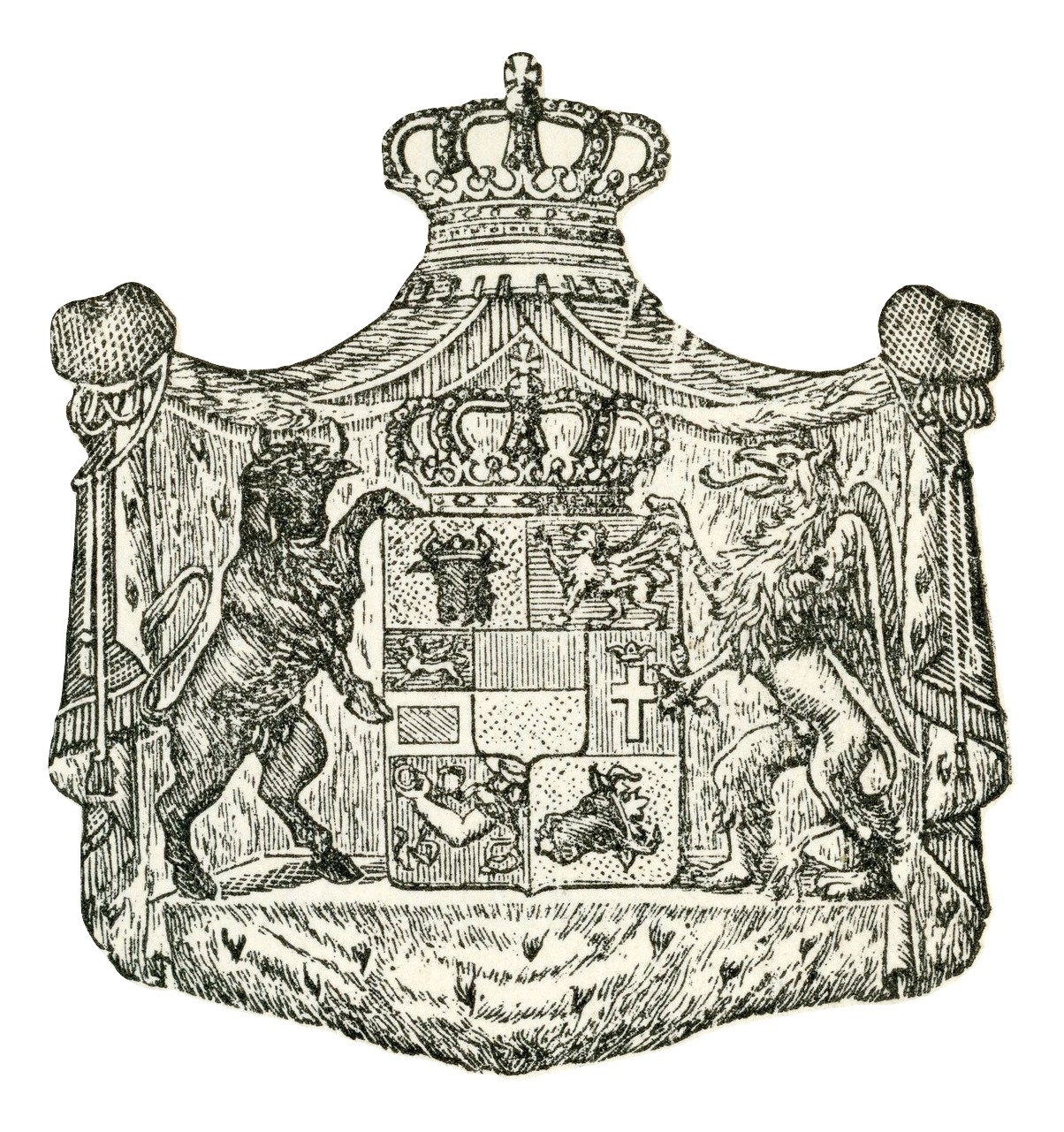Between 14-18 November the Duke and Duchess of Mecklenburg visited Slovakia at the invitation of the Slovakian diplomat Ambassador Ľubomír Rehák and his wife Mrs Mrs Dana Reháková. The couples visit was timed to coincide with the 240th anniversary of the death of Duke Georg August who died in Trnava on 14 November 1785 and was orginally buried in Pezinok.
The Duke and Duchess’ visit began with a trip to the Slovak National Theatre in Bratislava where they attended a performance of La traviata.
Saturday 15 November comprised of a visit to three different cities. The Duke and Duchess began the day with a visit to the Trnava where, accompanied by Father Dušan Bezák S.J., the couple visited the Jesuit church of the Most Holy Trinity, the Cathedral of St. John Chrysostom and the church of Saint Nicolas.
The Duke and Duchess then proceeded to the city of Modra where they were recivied by the chairman of Bratislava self-governing region, Mr Juraj Droba, and the mayor of Pezinok, Mr Roman Mács. The couple then visited Château Modra, a former water mill, the garden of which is now maintained by the Modra viticulture secondary school. The director of the school and the governor of the Bratislava region both welcomed the Duke’s proposal to help establish contacts with his Alma mater, the Grape Breeding Institute in Geisenheim, Germany, from where the Duke obtained a degree in viticulture and beverage technology in 1987.
The group then visited the town of Pezinok where the Duke and Duchess, accompanied by Mr Droba and the mayor Mr Mács, visited an interactive exposition at the Little Carpathian Regional Viticulture Museum, which hosts the largest collection of ancient grape presses in Slovakia, followed by a trip to the City Museum in the Old Town Hall then to the cellars of the Pavelka wine producer. Before returning to Bratislava, the Duke visited the Dubovský & Grančič winery in Svätý Jur.
On Sunday 16 November the Duke and Duchess returned to Pezinok for a formal reception at Old City Hall hosted by Mr Mács, the mayor of Pezinok. During the meeting the question of the possible twining of Pezinok with a town in Germany was raised, with the Duke proposing to suggest this form of partnership to German towns with links to the House of Mecklenburg-Strelitz.
The reception was followed by a divine service at the Evangelical Church in Pezinok attended by the Duke and Duchess and the mayor of Pezinok. The centre of the altar part of church was decorated with the coat of arms of the House of Mecklenburg-Strelitz and a wreath in the Mecklenburg blue-yellow-red colours of flowers with ribbon, the Strelitzia Regina flower was also a part of the wreath. During the service the priest Vladimír Kmošena welcomed the guests, Ambassador Rehák then spoke about the aim of the royal visit while Dr. Michal Duchoň from the Military History Institute spoke about Duke Georg August, who was an Imperial Major-General and, who after death in his 37 years in Trnava, was buried at Pezinok until 1852 when his remains were transferred to the Mecklenburg-Strelitz family crypt at Mirow.
After the Divine Service the ceremony continued outside the church, where the Duke and Duchess laid a wreath on the historical epitaph dedicated to Duke Georg August which had been made from local marble at the time of his death. The wreath was handled by two representatives of the Fringia Rennaisance from Bratislava dressed in their 18th century hussars´ uniforms. Both in the church and outside, the K-und-K Orchester wearing historic uniforms of the Imperial and Royal Army and under the baton of professor Zbyněk Kubáček, played mourning music, including the melody of Der gute Kamerad.
After the ceremony the Duke and Duchess met with the local Lutheran congregation at the priest´s house where the Duke thanked all those who contributed to the commemoration of the death of Duke Georg August 240 years ago. The Duke and Duchess then visited the Volunteers Firefighters unit at Pezinok with its Chairman Mr. Milan Čech, followed by lunch at the invitation of Pezinok´s Evangelical Assembly and the tasting of sparkling wines from the Hacaj winery.
Following a brief meeting at Topoľčany with Mr. Miroslav Aschengeschvantner from the Ministry of Foreign and European Affairs, the Duke and Duchess attended the Concert of Excellence at the Starý Klíž Estate upon invitation of its owner Mr. Gabriel Rehák where 16 year old pianist Nora Lubbadová from Prague performed for the guests. Afterwards an awards ceremony from the Servare et Manere organisation took place.
The Duke and Duchess spent Sunday night at Château Topoľčianky which today serves as a hotel today, but whose last private owner was Archduke Joseph August of Austria, the great-grandfather of the Duke. After 1918 the property was confiscated became the summer residence of the Presidents of Czechoslovakia.
In the morning of 17 November the Duke and Duchess visited the château museum followed by a visit to the medieval Benedictine Monastery at Hronský Beňadik. The Duke and the Duchess prayed in a chapel with the relic of the Holy Blood of Christ, donated by the Hungarian king Matthias Corvinus.
The Duke and Duchess then visited the town of Banská Štiavnica, a UNESCO World Heritage Site. After lunch at the Erb brewery the Duke and Duchess had a brief sightseeing tour of the historical town centre accompanied by the director of the Svätý Anton Museum, Mr. Miroslav Hudák.
The Duke and Duchess then visited the Svätý Anton Château, a former residence of Saxe-Coburg-Gotha-Koháry family. Between the WW1 and WW2 the château was frequently visited by the exiled Bulgarian King Ferdinand I, and his younger son Prince Kyrill. Mr Hudák and the historian Dr. Ingrid Hričovcová highlighted the many family connections between the Saxe-Coburg and Gotha family with the Habsburgs and Mecklenburgs. At the end of their visit the Duke and Duchess signed the museum´s guest book.
After returning to Bratislava late that evening for a farewell dinner, the Duke and Duchess departed Slovakia on Tuesday 18 November.
